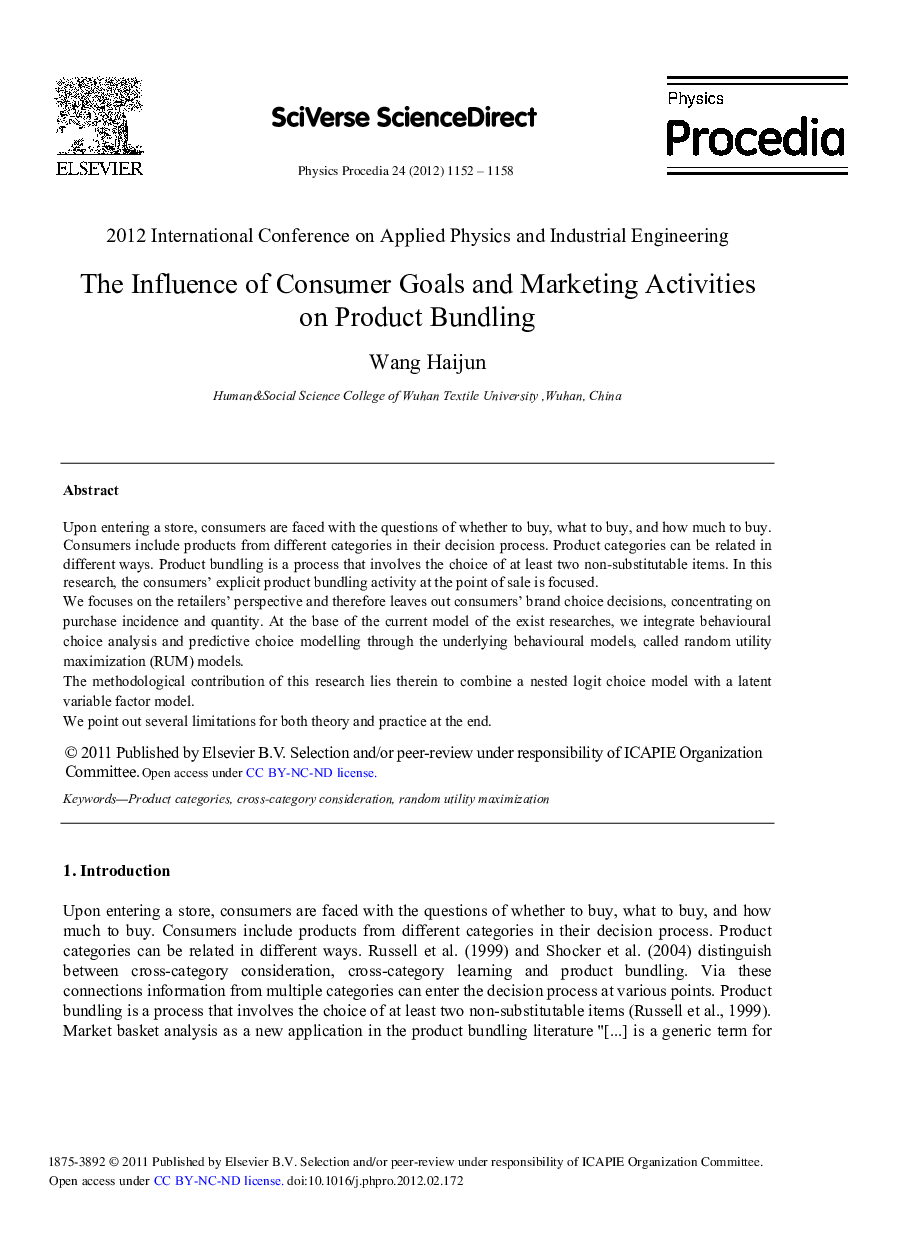| Article ID | Journal | Published Year | Pages | File Type |
|---|---|---|---|---|
| 1869499 | Physics Procedia | 2012 | 7 Pages |
Upon entering a store, consumers are faced with the questions of whether to buy, what to buy, and how much to buy. Consumers include products from different categories in their decision process. Product categories can be related in different ways. Product bundling is a process that involves the choice of at least two non-substitutable items. In this research, the consumers’ explicit product bundling activity at the point of sale is focused.We focuses on the retailers’ perspective and therefore leaves out consumers’ brand choice decisions, concentrating on purchase incidence and quantity. At the base of the current model of the exist researches, we integrate behavioural choice analysis and predictive choice modelling through the underlying behavioural models, called random utility maximization (RUM) models.The methodological contribution of this research lies therein to combine a nested logit choice model with a latent variable factor model.We point out several limitations for both theory and practice at the end.
